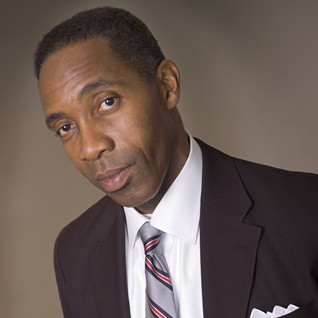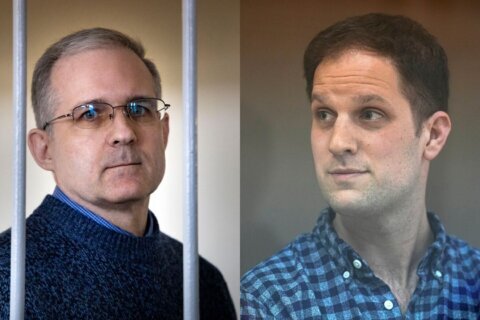WASHINGTON — Intelligence and security officials around the world are scrambling to head off the next big terror attack. “This is the most significant threat we’ve seen in at least a decade,” said Rob Wainwright, director of Europol, in an interview with WTOP.
Intelligence collectors, counterterrorism analysts and security officials are poring over names, locations, phone numbers — even pocket litter gathered by various surveillance and screening methods. Their quest is to link them all together before something happens.
Part of the problem, Wainwright says, is the growing pool of people involved in terrorist activities.
“The large community of foreign fighters willing to put their lives on the line to carry out the atrocities we saw in Paris suggests they have enough numbers to plan and carry out these attacks,” he says. Europol recently launched a new counterterrorism center to combat the problem.
Figures from the Soufan Group, a provider of strategic security intelligence, show that more than 30,000 foreign fighters left their countries beginning in 2012 to fight with the Islamic State of Iraq and the Levant (ISIL). The U.S. military indicates that tens of thousands have been killed.
Yet ISIL, Al Qaida and other terror groups continue to launch attacks, which are severely testing counterterrorism forces worldwide.
TSA Administrator Peter Neffenger said recently that part of the problem is competition among terror groups.
“That competition means that the environment is a little more uncertain than it was before.”
Patrick Skinner, a former CIA case officer with deep experience in counterterrorism, told WTOP, “The terror threat radar is overwhelmed.” The competition and drive to seize publicity add to the operational tempo for terror groups, which feed off of the “overall heightened concern and complicating issues like the refugee crisis in parts of the EU.”
The evolving skills of today’s terrorists comprise another part of the problem.
Skinner, director of special projects at the Soufan Group, says, “We could be in for a nasty time of terror surprises in terms of bombs and plots. I say this because the terrorists collectively have had several years of invaluable live-action experiments in Syria, Iraq, Yemen and Afghanistan. They’ve had lots of time lots of time to tinker and try out new ideas.”
Those ideas undoubtedly have seeped into the fabric of the terrorist community. The bomb that brought down Metrojet Flight 9268 on Oct. 31, 2015, over Egypt’s Sinai was estimated to contain two pounds of explosives packed into a soda can and wired in a rudimentary fashion to a detonator.
Explosives experts say it wasn’t terribly sophisticated, but well placed and timed. All 224 on board were killed. The bomb is believed to have been stowed on the plane by airport employees.
Today’s terrorists are rapidly mastering the technique of getting simple bombs on planes via corrupt airport personnel. Perhaps the clearest example happened on Daallo Airlines Flight 159, on Feb. 2, flying out of Mogadishu.
A bomb packed into a hollowed-out laptop computer ripped a hole in the fuselage of the airplane at 11,000 feet. The suicide bomber carrying it was sucked out of the plane, but the other 73 aboard survived. The aircraft was able to return to the airport safely.
Somalian aviation authorities say the bomber was not successful in destroying the whole aircraft because the explosion occurred before the plane reached a higher altitude.
CCTV footage shows two men handing the laptop to the suicide bomber before he boarded the plane.
Skinner said, “It’s difficult to say how sophisticated the (Metro Jet and Daallo) bombs were, given the insider possibility. There was no need to be super-sneaky when someone helps you put it on the plane. But appears both were small and designed for explosive decompression.”
He added, “The difference between mass-casualty Sinai and one-casualty Mogadishu was a matter of minutes and altitude. Checked luggage is always the nightmare, given how much there is and how many possible vectors the explosive can be in.”
Terrorist sympathizers willing to participate in plots appear to play a large role in overwhelming the threat monitoring system.
Skinner equates the development of aviation explosive devices to the evolution of the improvised explosive device (IED) during the Iraq War in the 2000s.
“They were constantly evolving and testing their devices against current countermeasures. That is the whole point of denying terrorists sanctuary: it gives them space, time, and opportunity to experiment on a large scale,” said Skinner.
And for Skinner, that space has advanced far beyond a secluded training camp. “We are way beyond terror sanctuary now; we moved on to terror states (re: Islamic State territory).”
But the learning process began well before 2003.
In the 1980s, aviation bombs were “very small and sophisticated [and] required a very unique skill set,” said Fred Burton, a former State Department counterterrorism agent.
Burton, now vice president of intelligence at Stratfor, says the master bomber of that era was Ramzi Yousef, who led the plot to attack the World Trade Center in 1993. “He utilized a very sophisticated bomb secreted inside of baby dolls. It was a very high-tech, complex IED, which utilized a Casio watch as the timer. It was his unique signature.”
Today, people with no experience or practice can read about bombs in terrorism magazines. Each day, dozens of attacks and plots are reported around the world. When attacks are successful, terror groups brag about them using perhaps their most dangerous weapon — the Internet.
Wainwright, of Europol, says terrorists now have “the ability to glorify their acts of terror — to brandish right across the Internet this twisted form of their religious belief along with their brutal ideology. The Internet allows them to spread it to potentially millions of people. It is very damaging to our society.”
It’s damaging in part because it replenishes their supply of fighters lured into the terror system and creating another person the authorities have to track.








